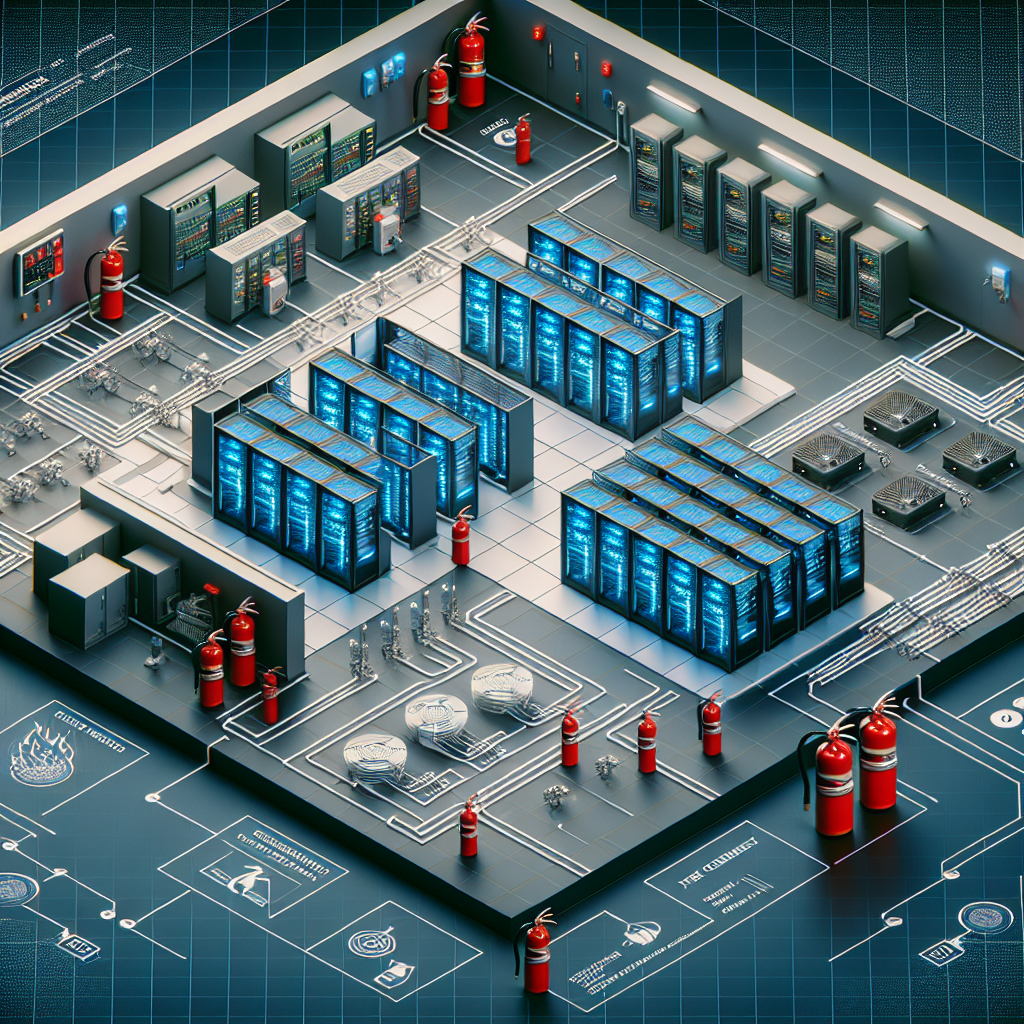Data centers are critical hubs for storing and processing large amounts of information for businesses and organizations. With the increasing reliance on digital data, it is crucial to have a comprehensive fire suppression plan in place to protect these valuable assets. A fire outbreak in a data center can lead to devastating consequences, including data loss, downtime, and financial losses. Therefore, developing a robust fire suppression plan is essential to mitigate the risks and ensure the safety of your data center.
Here are some key steps to consider when developing a comprehensive fire suppression plan for your data center:
1. Conduct a thorough risk assessment: Start by identifying potential fire hazards within your data center, such as electrical equipment, overheating servers, and flammable materials. Assess the likelihood and impact of a fire outbreak on your data center operations. This will help you determine the level of fire protection required and develop an effective fire suppression plan tailored to your specific needs.
2. Choose the right fire suppression system: There are various fire suppression systems available, each with its own advantages and limitations. Consider factors such as the size of your data center, the type of equipment housed, and the level of fire risk when selecting a fire suppression system. Common options include clean agent systems, water mist systems, and gaseous suppression systems. Consult with fire protection experts to determine the most suitable system for your data center.
3. Install adequate fire detection systems: Early detection of a fire is crucial for quick response and effective suppression. Install smoke detectors, heat sensors, and flame detectors throughout your data center to promptly alert personnel in case of a fire. Integrate these detection systems with your fire suppression system to ensure a coordinated and automated response to a fire emergency.
4. Establish emergency response procedures: Develop detailed emergency response procedures outlining the steps to take in the event of a fire in your data center. Train your staff on these procedures, conduct regular drills, and designate specific roles and responsibilities to ensure a swift and organized response to a fire incident. Collaborate with local fire departments and emergency services to coordinate response efforts and enhance the effectiveness of your fire suppression plan.
5. Regular maintenance and testing: Regular maintenance and testing of your fire suppression system are essential to ensure its proper functioning in case of a fire emergency. Schedule routine inspections, testing, and maintenance of all fire protection equipment, including suppression agents, detection systems, and alarms. Keep detailed records of maintenance activities and compliance with regulatory requirements to demonstrate the reliability and effectiveness of your fire suppression plan.
In conclusion, developing a comprehensive fire suppression plan for your data center is essential to safeguard your valuable assets and ensure business continuity. By conducting a risk assessment, selecting the right fire suppression system, installing adequate detection systems, establishing emergency response procedures, and maintaining your fire protection equipment, you can enhance the safety and security of your data center. Collaborate with fire protection experts and emergency responders to create a robust fire suppression plan tailored to your specific needs and ensure the resilience of your data center against fire hazards.


Leave a Reply